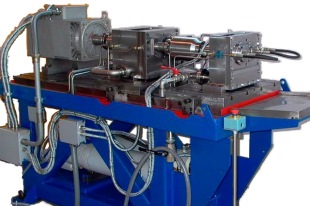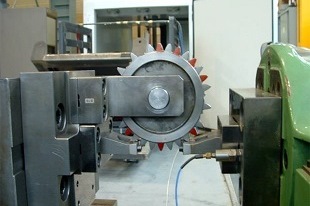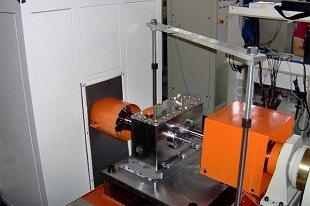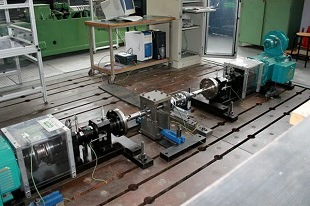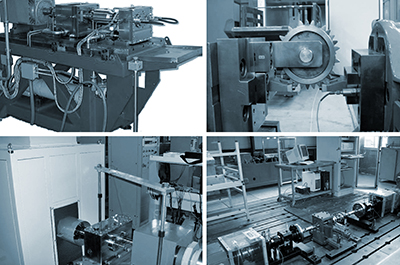
Gears are machine elements that, through the meshing of conjugate profiles, allow to transmit power between two rotating axes, while maintaining an almost constant instantaneous angular speed ratio.
Their peculiar working principle implies the presence of a sliding/rolling contact condition that leads to several failure modes (e.g. scuffing, wear, pitting, micropitting, etc ), as well as a repeated pulsating bending load acting on the tooth root. Anyhow, even though gearboxes have been known and used for centuries, additional information and research are necessary to accomplish the design and manufacturing of lightweight and high-performance gearboxes.
Gear testing is performed because the gear industrial scenario is requiring experimental data, almost close to the exercise condition, that is the reason why gear testing is not performed on generic specimens, but on gears themself. Gear testing at DMEC allows to test actual gears in a relevant environment: Tooth Bending Fatigue, Contact Fatigue (pitting and micropitting), vibration and noise, efficiency, contact pattern and torsional stiffness tests on gears and gear reducers.
Several experimental devices are available:
- CENIT 2, a power-recirculating test rig suitable for gear contact fatigue (i.e. pitting), scuffing and bending fatigue tests on running gears. Its principal components are two gearboxes, with identical gear ratio. One gearbox is oversized (i.e. service gearbox), localizing the gear failure in the test one. A rotating hydraulic actuator provides the torque while an electric motor keeps the system in rotation, supplying all the power losses occurring within the gearbox. The main difference between CENIT 2 and the classical FZG test rig is the rotating hydraulic actuator that provides a continues control of the applied torque and allows to apply load spectra.
- Max Torque 800 Nm
- Max rpm: 3000
- Max Power: 225 kW
- Center distance: 91.5 mm
- Gear ratio: 17/18, module 5
- Schenck mechanical resonance pulsator for tooth root bending fatigue tests with a STBF (Single Tooth Bending Fatigue) approach. a Schenck mechanical resonance pulsator is available to estimate the tooth root bending fatigue load carrying capacity via a an STBF approach.
- Within the test rig, two anvils transmit the load to two gear teeth, recreating the tooth root bending fatigue phenomena.
- VIBRU, Motor / brake test rig up to 100 kW, reconfigurable on plates, typically adopted for measurements of Transmission Error and Noise.
- Electric power recirculation test rig, DC motor and brake, 30 kW, 3,000 rpm reconfigurable on plates.

